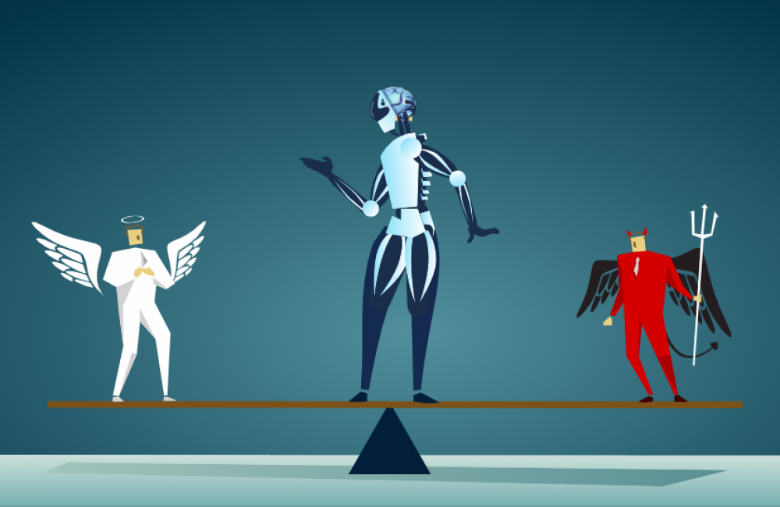The Evolution of AI – From Science Fiction to Everyday Use
By Arun Shastry, Vice President, Data Analytics, Berkshire Hathaway Homestate Companies
AI is everywhere these days. I mean everywhere – your phone, your car, your bank, your games, your streaming service, your doctor, heck, even your fridge is using some form of AI to understand your behavior and your needs to customize services for you. How did this technology go from science fiction or niche applications not too long ago to everyday use in such a short time? Did our needs change? Actually, the needs have always been there but what it took was a systematic development in the infrastructure and a supportive environment to enable AI to go mainstream. Let’s review the evolution of AI and see where this amazing technology is headed in the future.

In the early 1900’s when automobiles first came out, adoption was limited to the affluent and the first generation cars didn’t go too fast nor too far. But over time, as prices dropped and with paved roads, gas stations, services, and multi-lane highways, cars quickly became the de facto transportation method for the masses. AI’s rise to success is somewhat similar. Let’s explore and see the similarities in these two innovations that changed (and continue to change) human life.
First came cloud computing, which made it easy to access unlimited computing and storage resources quickly and inexpensively. AI needs massive computing resources to scale in production. Fast storage is just as essential in supporting AI models to access large volumes of data to train and test in a reasonable amount of time. Cost optimized cloud environments enabled AI innovation to reach new limits everyday with new applications in real time. This is equivalent to paved roads in our automobile example.
Then came open source technologies – algorithms, datasets, platforms, programming languages, and frameworks. Some of the largest companies with deep pockets, such as Intel, Google, etc. are promoting and contributing to the open source community. A recent study shows that 48% of enterprises currently use open source technology for AI/ML, and that number will likely rise to 65% by 2023. Open source technologies are like the gas stations in our automobile example – they literally fueled the escalation of AI adoption to new levels. One could argue that open source technologies have been around much longer than cloud technologies and you would be right. But I believe that the cloud made open source technologies more popular and increased their growth (or the other way around?).
We cannot ignore the impact of education and talent on the rise of AI. Many of us may have taken an AI course in our undergrad years as an elective; today, you can major in AI at many reputable universities across the globe. Recent graduates are entering the workforce fully equipped to build robust, large scale AI applications and that’s propelled the sea change in the current business environment. Companies are able to deliver AI-enabled applications in record time to meet the needs in creative and unique ways, due in large part to their talented teams. This recent report from Stanford shows the impressive growth and trends in AI education across the world. I would equate this trend to the availability of services in our automobile example.

Lastly, I believe Covid put AI and ML adoption on a fast track. Remote work forced companies to automate workflows that were once handled by humans. Customer behavior changed with pressure on companies of all sizes to emphasize their digital capabilities. Consumers also became cost-conscious, which further pushed companies toward automation. Enter AI. Not only did AI help companies to automate, but it also enabled them to observe and learn behaviors and better cater to consumer needs using AI models. As people across the globe have started taking a deeper look at their lives and what’s important to them, mass resignations only added more fuel to digital transformation and the rapid growth of AI. This, in my opinion, is akin to the multi-lane highways in our automobile example.

It took decades for cars to become ubiquitous. I think we’re just getting started with AI evolution and the best is yet to come. Applications in healthcare, retail, entertainment, and financial services will likely explode in the next 3-5 years. Jobs requiring some sort of AI or ML skills are expected to increase to 71% in the next 5 years. With this kind of growth, it’s imperative for all of us to enforce the ethical use of AI technologies. While I’m not worried that AI and ML will replace humans anytime in the near future (phew!), I do believe rapid growth in this area will pose new challenges and problems. One of the questions I get a lot is how do we ensure the AI models are not biased? Or how do we remove subconscious biases that a normal human may succumb to? The Harvard Gazette published a thought-provoking article on this topic in 2020, and it’s even more relevant today as AI proliferation continues in our daily lives. Expect to see more legislation and governance to tame AI offenders.
In summary, I think AI has improved human life in more ways than any other innovation and will continue to dominate the dialogue for years to come. We’re fortunate to witness what I believe will be one of the major game changers of this century.

